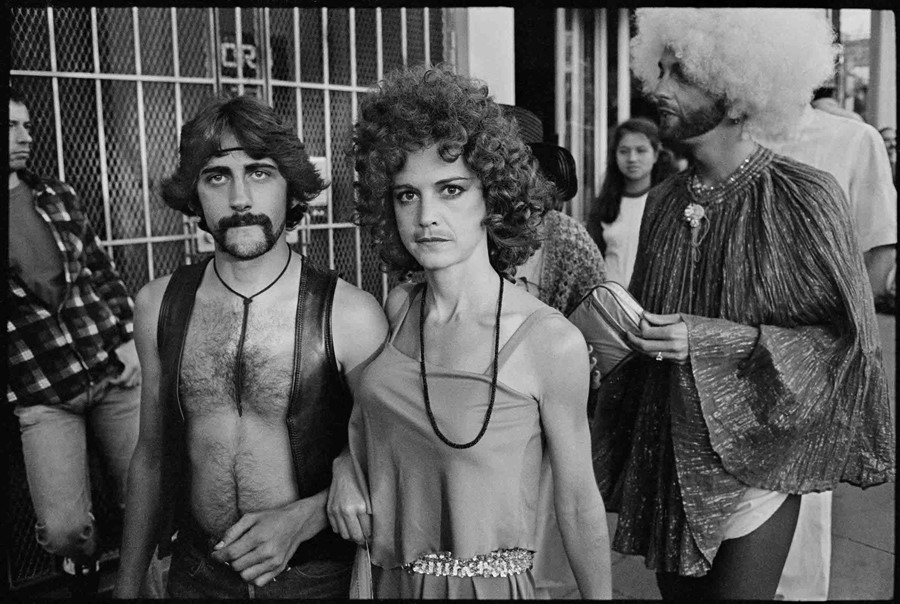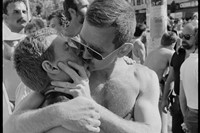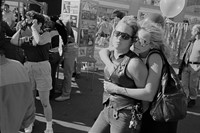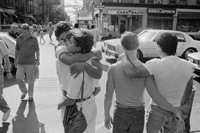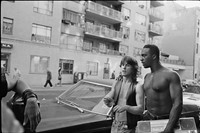As his new book is released, Nicholas Blair talks about capturing the heat and hedonism of the queer communities in 1980s San Francisco and New York
In the late 70s, gay life began to spill out onto the streets of San Francisco’s Castro District, rapidly eclipsing the hippies as the most visible counter-culture movement of the day. People came to see and be seen, tease, cruise, and congregate in public as a community. “It was this outburst of pent-up celebration,” says Nicholas Blair, who was living in a free-love arts commune across town at the time. “It felt like the door of tolerance was opening and people were leaning in, hard, to live as their true selves.”
With a Leica rangefinder camera loaned to him by a childhood friend, Blair walked through this so-called “gay paradise”, capturing everything from the mundane to the profane. He photographed individuals dressed head-to-toe in fetish gear, others who preferred to communicate in more subtle codes and winks, and the everyday passersby who moved around them. Between 1979 and 1986, he followed the fervour to other pockets and playgrounds of gay life across the US – New York’s Christopher Street and Fire Island, and Provincetown, Massachusetts.
Blair’s new book, Castro to Christopher: Gay Streets of America 1979–1986, transports viewers to the heat and hedonism of that time – a period looked back on as a kind of twilight zone, after Stonewall and before the darkness of the Aids epidemic.
Below, Blair reflects on his route into these “gay paradises”, the ambiguous art of photography, and the importance of his images today.
“In 1973, I dropped out of high school in New York and hit the road. 15 months later, after hitch-hiking as far as Buenos Aires, I landed in San Francisco. There, I joined my brother, and with a few friends formed a small arts commune called The Modern Lovers.
“We were one of the last hippie groups in San Francisco. The commune had no rules, which is probably why it didn’t last that long. We opened an art gallery, but only two shows actually made any money, so we mostly sustained ourselves through dumpster diving and other scrounging. The vibe was a little bit of chaos, but it did allow for freedom of expression and time to do our own thing. My thing was photography, and I really got into the medium when Larry Bair, a photographer friend of my brother’s, took me under his wing. We explored the Bay Area together, heading where the light was good or where interesting things might happen.
“I’d always considered San Francisco a very open and inclusive place. So when Harvey Milk, the first openly gay man to be elected to public office in California, was murdered in the fall of 1978, it was a shock. I started photographing political demonstrations at that time, and found it interesting what was going on within the gay community around the Castro.
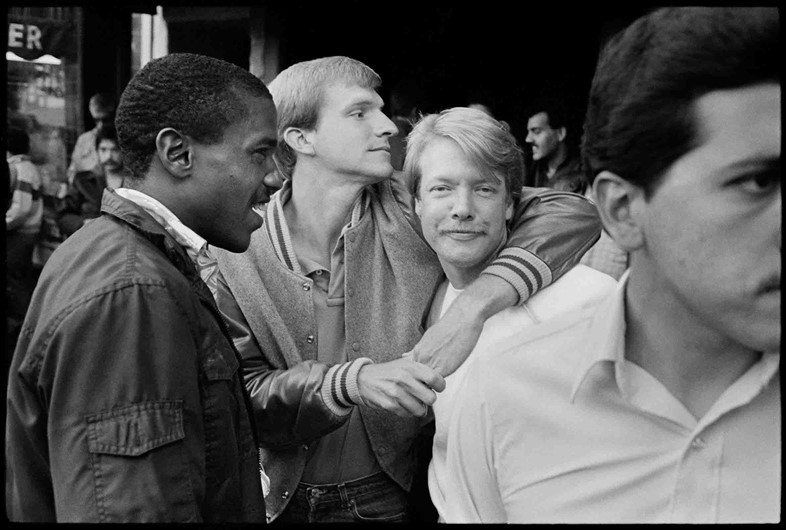
“Walking down the Castro could really vary. It could be quiet, or you could stumble across serendipitous moments – a performance or a parade, a tricycle race with drag queens. I wasn’t gay myself, but I always felt accepted. I think there was intersectionality between the hippie movement and the gay community. It was a cultural revolution, with a lot going on.
“While visiting family in New York, I’d head down to the West Village to check out Christopher Street. It was definitely more gritty, and at the end of it, right on the Hudson River, there was this fantastic pier. It was really rotting and falling apart, and people treated it like the Riviera in summer, putting out their blankets and towels and hanging out. I started getting my images published in The Advocate, which gave me a push to go to Provincetown and Fire Island and photograph the scenes there.
“It all felt very new then. There was this feeling that the bottle had been uncorked and people could finally come out onto the streets and do what they wanted. Gay people came from around the country to be there and feel at least a modicum of freedom. If it wasn’t for Aids, the spectre of which hangs over my later images, perhaps things would have accelerated much faster. I lost Larry to the disease, the person who had inspired me to take the photographs in the first place.
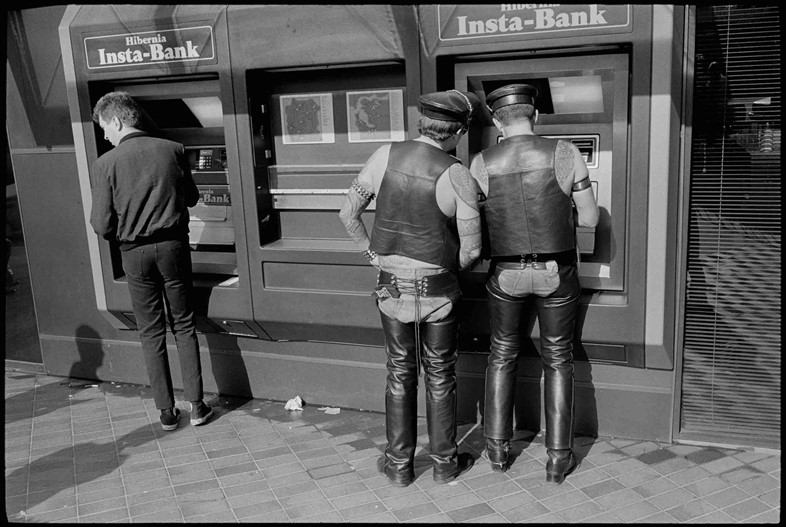
“I think a photograph is a little bit like a gemstone: there are many different ways to look at it and many different facets to it. The cover shot, for example, poses a question about what the well-dressed older guy is doing at the parade. Is he out of place, or participating? The two guys next to him almost look like statues, but you can feel the love and emotion they’re carrying. The image is ambiguous and can be interpreted in different ways, in much the same way life is ambiguous and can be interpreted in different ways.
“I hope the book gives viewers a sense of what it was like to walk those streets at that time. I do think that period was the beginning of the gay community’s coming out. One of the reasons I wanted to do the book now is because there’s been so much backlash against LGBTQ rights recently in the States. I really hope progress is a one-way trajectory.”
Castro to Christopher: Gay Streets of America 1979–1986 by Nicholas Blair is published by powerHouse Books, and is out now.
